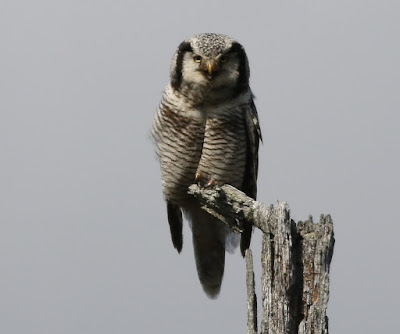Following the tumultuous vote in the British Union For
Ornithology (BUFO) referendum on the question "Do you wish to Remain to be
allowed to use European Optics" or "Leave the European Optics
alone", then there have been traumatic times for British Birders in
the last few days.
With the vote unexpectedly going in favour of the Leave
campaign, then there have been major drops on the FTSE & sterling. The
Leave team had campaigned to stop Birders from being able to buy expensive
European optics. As a result, shares in camera and optics companies have
plummeted on the news of their victory. Similar big drops in the share prices
of banks have occurred as Birders will no longer be asking for loans to buy expensive
optics.
The Outers, who had no plan for the future, have reacted to
the news of their victory with joy, but panic (as they never expected to win). When
asked for his thoughts & his favourite optics, the leader of the Leave
campaign, John Boriston said "Cripes. So we won, crikey. Old JoBo's
favourite optics have always been my eyes. I've always been a keen birdwatcher
& I'm especially keen on those two-legged Birds". At that point, he
saw a good looking Bird go past & cut the interview short to cycle after
her.
Another Leave supporter quietly admitted "I only voted
Leave, so I could moan for the next few years, everything was the fault of the
Remain camp. What have I done?".
Another more candid comment came from an unnamed Birder who
said "I could never afford the prices of a pair of Leica or Swarovski bins
on my benefits. Therefore, it was natural I voted Leave. Why should other
Birders have what I can't afford? If the Remain camp were serious, then they
should have increased my benefits, not cut them".
Many Birders woken up shocked & stunned, at the Leave
news on Friday morning. A Birder who didn't want to be named, told our reporter
"The problem is the referendum was opened up to the wrong people. The decision
should have been left to the experts, namely Birders. We care passionately
about our optics. By opening the referendum up to the families of Birders, then
you allowed my wife a vote as well. She was swayed by the Outer's promise, that
if I wasn't spending the money we should have being saving to allow our children
to go to university, then she could have a new kitchen. Where the logic in
that?". He the added "Please don't publish my name as I can't afford
a divorce at the moment, especially as I still have to pay off my now worthless
telescope for the next two years. I only told my wife about the initial deposit,
not the monthly repayments. She hasn't spotted my new camera body either".
Perhaps the strongest opposition have come from the Next
Generation Birders (NGB) community of Birders, who are all under 25. One
prominent NGB Birder said "I will be permanently in debt for many years to
come. My bank refused me a huge expensive loan to buy my European optics. My
only option was to go to university & spend much of my student loan to buy
a top of the range Swarovski bins & telescope. Now I have to study for the
next two years & I don't know where the money for that will come from".
As the pound crashed following the news of the Leave vote &
the expected ban on European optics, then traders rushed to put their money into the traditional
safe havens of gold & silver. But market watchers were surprised that the price
of scrap brass doubled in the first hours after the result was
announced. Initially this confused market analysts, until news started
filtering out that the only British telescopes ever made were a long forgotten
range of brass draw tube telescopes. It is thought they will be the only ones
allowed in the future.
This has led to long retired Birdwatchers searching their
lofts for their old brass draw tube & up to now, worthless telescopes. Back in the 60s & 70s, keen seawatchers could be seen huddled stretched out on
cold beaches using long brass draw tube telescopes looking out to sea. Photos are rare of these telescopes, but check out this photo of one in use at the first British Forster's Tern twitch.
In the 80s, the first of the new generation telescopes
appeared and Birders suddenly realised you didn't need to lie down on a cold
sloping beach & balance a five foot long brass telescope on your feet.
Instead you could see more using a modern shorter, light-weight, telescope
balanced on a tripod. The European telescope manufacturers flooded the UK market & Birders quickly dumped their useless
telescopes, putting the UK
telescope companies out of business.
NGB Birders have complained, the result of the referendum is
the fault of the Birding Old Timers (BOT). It's alright for the BOTs, they still
have their old optics. We can't afford to buy these antique telscopes, whereas they still
have them. It's bad enough that the BOTs all have big lists, whereas we still have
to race off all the time to slowly try to close the huge gaps in our lists. But
now they have the only optics that are likely to be legal to use in the future.
They won't even complain that the quality of the optics is poor, as they will assume
it their failing eyesight anyway & just book up for another eye test. It's
so unfair.










































